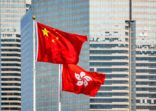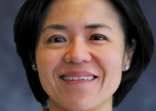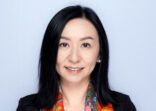The five Hong Kong-domiciled funds available for sale in the mainland (northbound) under the Mutual Recognition of Funds (MRF) programme saw another strong month of net inflows of RMB 928.7m ($137m) in June, according to the latest data from the State Administration of Foreign Exchange (SAFE).
MRF monthly net sales (RMB m)
|
|
Northbound |
Southbound |
|
June |
928.7 |
17.7 |
|
May |
1,140.8 |
42.6 |
|
April |
67.4 |
8.8 |
|
March |
-10.2 |
4.7 |
|
February |
-181.6 |
3.6 |
|
January |
-286.1 |
-2.4 |
|
Total net sales since January 2016 |
9,431.5 ($1.4bn) |
171.2 ($25.3m) |
Source: State Administration of Foreign Exchange
In terms of gross sales, the five funds collectively raised RMB 1.3bn last month, slightly weaker than RMB 1.5bn in May, while outflows remained roughly stable.
Since the beginning of 2016, only eight funds have been approved for sale to mainland investors by the China Securities Regulatory Commission. They include two products from Schroders and Amundi which received approval in the last two months. In March, CCB International’s fund was pulled from the shelf one day after it began subscriptions due to what the firm said was operational issues.
Meanwhile, southbound funds − about two dozen mainland funds selling in the SAR – had a decrease in gross sales (RMB 26.3m) last month, but still recorded the second highest amount since the MRF link was launched in late 2015.
QDII decline
However, for the 128 QDII mutual funds in China, another key channel for mainland investors seeking offshore exposure, AUM has dropped slightly since March, data from the Asset Management Association of China (AMAC) shows.
QDII mutual funds had RMB 106.3bn of AUM as of May, compared to March’s peak at RMB 109bn, according to semi-official body AMAC, although significantly higher than 2015-end at RMB 66bn. Still, they account for merely 1.1% of the overall mutual fund assets onshore, which total RMB 10trn.
Qualified Domestic Institutional Investor (QDII) funds, managed by domestic fund houses (who can also outsource the management to overseas firms), can use the assigned quota to invest in global markets. This asset class was the best performing category in China, returning 7.2% in the first six months of this year, according to an earlier report by Xinhua.
According to a report by the Shanghai Securities News, a financial newspaper under Xinhua News Agency, the Shanghai-listed E Fund Hang Seng China Enterprises Index ETF, one of the best performing QDII products, has had the largest outflows in the first half of this year.
Investors’ short-term horizon might be one reason, as they want to cash in, the report said. In addition, some distributors are eager to push new products to gain commissions.
The SAFE stopped issuing new QDII quota in March 2015 amid concerns over capital outflows. From the total $90bn quota issued since 2006, $37.6bn was granted to fund houses and brokerage firms.
















